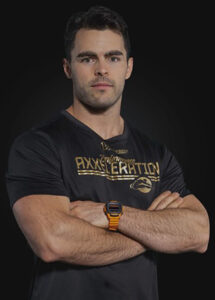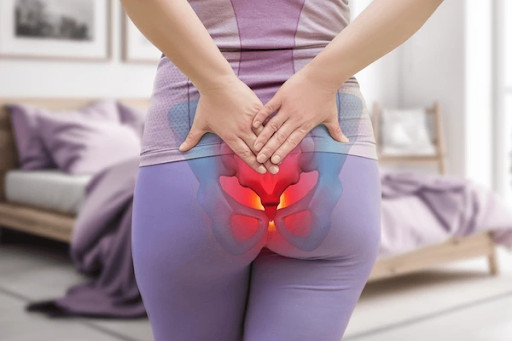After discussing the NHL combine results in Buffalo with Mark Lambert, strength & conditioning coach of the Tampa Bay Lightning, it is clear that things have to change. According to him, the overly precipitated specialization is the main consequence of the weaker off-ice results that have been seen in the past few years. This was the first wave of the Generation 2000 athletes.
In 2023, young players have the possibility of playing ice hockey all year round, even during the off-season. Several parents and coaches incorrectly believe that the early specialization in the career of the child would surely allow them to attain an elite level. We often hear «that it takes up to 10,000 hours of practice before attaining our full potential». Unfortunately, this myth must be busted. A study of 35,000 highly qualified young athletes selected to train in Russian sports schools found that only 0.14% reached high-level status. In his book The Sports Gene: Inside the science of Extraordinary Athletic Performance, David Epstein highlights that the vast majority of Elite athletes achieved their full potential over less than 10,000 hours. This belief of 10,000 hours of practice introduced by Anders Ericsson does not take into consideration several factors such as genetics on athletic performance, coaches’ support and help, psychological aspects on performance such as the intrinsic motivation of the players (pleasure of playing), and even the chance to be in the right place at the right time (“timing”).
So what are risks the risks of early specialization for the young hockey players of the generation 2000?
An early specialization in sports such as ice hockey can often lead to overtraining and injuries. Those symptoms can be identified by articular and muscular pain or by a change of personality. The rest and recovery time is not respected, which causes body fatigue. The treatment is indisputably rest!
A study involving more than 1,500 student-athletes conducted by Timothy McGuine, Ph.D., ATC, of the University of Wisconsin in 29 high schools in Wisconsin showed that the athletes who specialized in one sport were twice as likely to report lower body injury while participating in sports (46%) as opposed to athletes who did not specialize (24%). In addition, specialized athletes sustained 60 percent more new lower-extremity injuries compared to the others during this study.
According to the Council Sports Medicine Fitness, a specific physical activity should be limited to 5 days a week with one rest day per week to recuperate, and about 2-3 months free per year to practice other physical activities. Taking part in another sport is associated with a decrease in injuries since the body makes different movements and the athletes use their muscles in a different way, thus reducing the risk of overuse injuries. It is also associated with extended sports participation in young athletes and a greater pleasure continuing the practice of their sport, which is linked to a better potential of long-term physical health.
Here are other possible consequences of early specialization
– Interferes with healthy child development
– Higher psychological risk due to stress (expectations of parents and significant others)
– Increased risk of overuse injuries (and overall injuries)
– Physical/emotional exhaustion and sport devaluation (burnout)
– Reduced chances that the child will be physically active as an adult
– Does not guarantee future athletic success
When our Midget AAA and QMJHL players arrive at our Performance Center after their hockey season, they have a minimum of 2 to 4 weeks before starting their off-season training in the gym. The return on the ice to get ready for the next season is only made 6 to 8 weeks before the training camps. In total, these young athletes, aged 15 and older, rest about 2 to 3 months without setting foot on the ice! This brings us to the following question: why should a 12 year-old take part in ice hockey schools, AAA summer leagues or showcases for his visibility?
These kids should have at the very least 3 months off of ice hockey before the following season, which is a perfect time period to participate in other sports.
What are the recommendations?
For a young player under the age of 12, it is important to play as many sports as possible to learn and develop fundamental motor skills such as agility, balance, coordination, speed, jumping, climbing, walking, skating, to hop, to swim, to skip, to throw, dribbling, kicking and catching. Since ice hockey is a late-specialization sport (after 15 years old), it doesn’t even need to be the main sport before the child’s maturation. Between 13 and 15 years of age, the athlete can dedicate 50% of his time to his main sport, while 80% of his time should be dedicated to the sport from the age of 16.
Specializing early in a late-specialization sport (and practicing only one sport at a young age) contributes greatly to one-sided physical preparation, one-sided technical-tactical preparation, overuse injuries, and increases the chance of dropping out from sports and physical activity.
Ultimately, playing different sports at a younger age improves motor development and gives the child the opportunity to discover the sport he enjoys most and in which he will excel.
After all, summer is made to play other sports and have a good time!
Have a good season everyone!
Reference
Ljach W. High-performance sport of children in Russia. Leistungssport. 1997;27:37-40
Franzen J, Pion J, et. al. Differences in physical fitness and gross motor coordination in boys aged 6-12 years specializing in one versus sampling more than one sport. Journal of Sports Sciences, DOI:10.1080/02640414.2011.642808 (available online ahead of print: 03 Jan 2012).
Mostafavifar AM, Best TM, Myer GD. Early sport specialisation, does it lead to long term problems? Br J Sports Med. 2013;47:1060-1061.
DiFiori JP, Benjamin HJ, Brenner J, Gregory A, Jayanthi N, Landry GL, Luke A. Overuse Injuries and Burnout in Youth Sports: A Position Statement from the American Medical Society for Sports Medicine. Clin J Sport Med 2014;24(1):3-20.
Jayanthi N, Pinkham C, Dugas L, Patrick B, LaBella C. Sports Specialization in Young Athletes: Evidence-Based Recommendations. Sports Health. 2013;5(3):251-257. doi:10.1177/1941738112464626.









